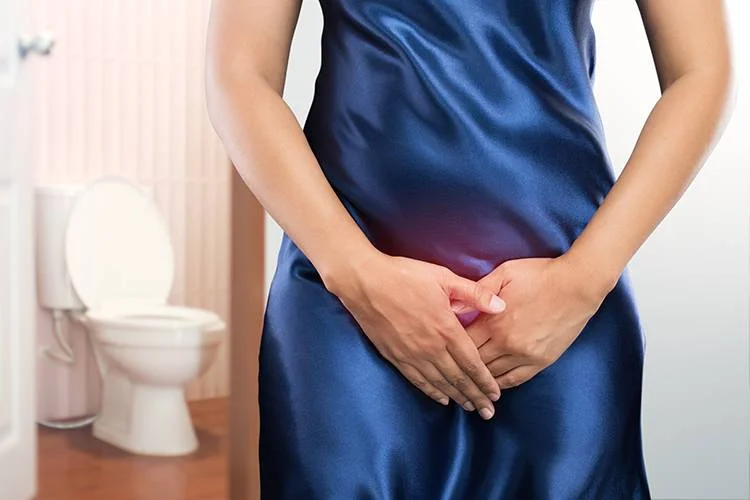Urinary incontinence is more than just a minor inconvenience; it is a serious health concern that can significantly impact a person’s quality of life. The condition, which refers to the involuntary leakage of urine, affects millions of people globally, regardless of age or gender. Though often dismissed as a natural part of aging or a minor issue, urinary incontinence deserves far more attention. Whether it’s occasional leakage or more frequent accidents, the implications of this condition are far-reaching, impacting emotional health, social life, and overall well-being.
For those residing in Florida, finding the best urinary incontinence therapy has become an essential part of managing the condition and improving quality of life. Understanding why urinary incontinence should be taken seriously not only helps raise awareness about the issue but also encourages people to seek appropriate treatment and care.

Types of Urinary Incontinence
Before delving into why this condition should not be taken lightly, it is essential to recognize the different types of urinary incontinence. Knowing which type one is experiencing can play a pivotal role in seeking proper treatment.
- Stress Incontinence: Stress incontinence is the most common type of urinary incontinence, particularly among women. It occurs when physical stress, such as coughing, sneezing, laughing, or exercising, causes urine leakage. This type of incontinence is often related to weakened pelvic floor muscles, which can result from childbirth, aging, or obesity.
- Urge Incontinence: This form of incontinence is characterized by a sudden, intense urge to urinate, followed by an involuntary loss of urine. It is commonly associated with overactive bladder syndrome, where the bladder muscles contract uncontrollably, often with little warning.
- Overflow Incontinence: Overflow incontinence occurs when the bladder doesn’t empty completely, leading to frequent dribbling of urine. This can happen when the bladder is too full, but the person cannot sense it, leading to involuntary leakage.
- Functional Incontinence: Functional incontinence happens when a physical or mental impairment prevents a person from reaching the bathroom in time. This can be due to conditions like arthritis, Parkinson’s disease, or dementia, which limit mobility or cognitive function.
- Mixed Incontinence: Some people may experience a combination of stress incontinence and urge incontinence, known as mixed incontinence. This form can be more challenging to manage as it involves two different sets of symptoms.
Each of these types has its own set of causes, risk factors, and treatments. For instance, stress incontinence can often be managed with pelvic floor exercises, while urge incontinence may require medication or behavioral therapy.
The Emotional and Psychological Impact of Urinary Incontinence
Urinary incontinence is not only a physical condition but also one that has a profound emotional and psychological impact. Individuals suffering from incontinence often experience embarrassment, anxiety, and even depression. The constant worry about accidents, along with the potential for social isolation, can affect one’s mental health.
Those with severe incontinence may feel ashamed and avoid social situations altogether. This can lead to a diminished sense of self-worth and may even result in withdrawal from activities that they once enjoyed. The psychological burden of urinary incontinence often goes unnoticed, but it is an essential aspect of the condition that must be addressed.
The Impact on Daily Life
Urinary incontinence can affect nearly every aspect of daily life, from work to social interactions and personal relationships. Many individuals with incontinence find themselves avoiding social gatherings, physical activities, or even simple errands because they fear experiencing an accident in public. This avoidance can lead to further isolation and a decrease in the overall quality of life.
The financial strain of managing urinary incontinence can also be significant. Incontinence products such as pads, diapers, and absorbent underwear can add up quickly, leading to a constant financial burden for those affected. Additionally, the costs of medical treatments, consultations, and therapies can be overwhelming, especially if the condition becomes chronic or worsens over time.
Health Complications Associated with Urinary Incontinence
While urinary incontinence may seem like a manageable condition at first glance, it can lead to several serious health complications if left untreated. One of the most common complications is urinary tract infections (UTIs), which are more likely to occur when urine remains in the bladder for longer periods due to incomplete emptying. Chronic UTIs can lead to kidney damage or more severe infections, which can be life-threatening if not addressed promptly.
Incontinence can also lead to skin irritation and rashes. The prolonged exposure to moisture from urine leakage can damage the skin, leading to conditions like dermatitis or urinary tract infections. These skin issues are particularly prevalent among individuals with mobility challenges or those who are bedridden, as they may have less access to hygiene products.
Another complication is the increased risk of falls, especially among elderly individuals. The urgency to urinate, combined with a lack of mobility or balance, can lead to accidents and injuries. These falls can result in broken bones, further compromising the individual’s overall health and quality of life.
Why Treatment is Crucial?
Despite the emotional, psychological, and physical toll that urinary incontinence can take, many people delay seeking treatment. This hesitation is often due to embarrassment or the misconception that incontinence is simply a part of getting older. However, urinary incontinence is a medical condition that can often be managed, treated, or even cured with the right intervention.
Several treatment options are available, depending on the type and severity of the condition. For example:
- Pelvic floor exercises (Kegel exercises) are a common and effective way to strengthen the muscles that control urination, particularly for those with stress incontinence.
- Bladder training and lifestyle changes, such as fluid management and weight loss, can help those with urge incontinence.
- Medications like anticholinergics can help manage overactive bladder symptoms.
- Surgical options may be recommended for severe cases, such as sling procedures or artificial urinary sphincter implantation.
- Biofeedback and physical therapy can also be used to help patients regain control over their bladder and pelvic muscles.
Timely treatment can prevent the condition from worsening and help improve overall health, reducing the risk of complications associated with long-term incontinence.
Prevention and Lifestyle Modifications
While not all cases of urinary incontinence can be prevented, certain lifestyle changes can reduce the risk of developing the condition or help manage its symptoms. Maintaining a healthy weight, quitting smoking, and avoiding excessive alcohol and caffeine consumption can all reduce the likelihood of developing urinary incontinence.
For women, regular pelvic floor exercises during pregnancy and after childbirth can help maintain muscle strength and prevent issues like stress incontinence later in life. Men and women alike can benefit from avoiding excessive straining during bowel movements, which can put unnecessary pressure on the bladder and pelvic floor.
Why Choose Refresh?
At Refresh, we are committed to providing the best urinary incontinence therapy in Florida. Our specialized treatments and personalized care are designed to help individuals regain control over their health and live a fuller, more active life. We understand the challenges that come with urinary incontinence and provide a range of treatments tailored to meet your specific needs.
With our experienced team of professionals, advanced therapies, and compassionate approach, Refresh offers the best incontinence care available. We are dedicated to ensuring that every patient receives the support they need to manage their condition effectively and improve their quality of life. Whether you’re dealing with stress incontinence, urge incontinence, or any other type, we are here to help you every step of the way.


